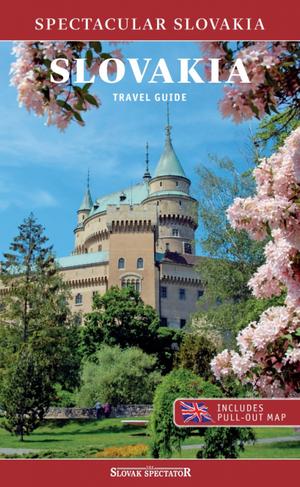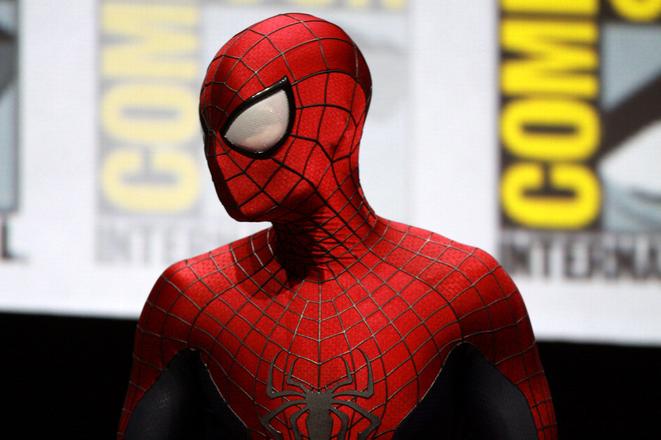You can read this exclusive content thanks to the FALATH & PARTNERS law firm, which assists American people with Slovak roots in obtaining Slovak citizenship and reconnecting them with the land of their ancestors.
There are several public figures known world-wide that have Slovak roots. While some wear them on their sleeve, like American singer Jon Bon Jovi, there are others about whom this is not widely known.
You could say that in case of Steve Ditko, legendary American comics artist best known for being the co-creator of Spider-Man, he almost hid this fact behind a mask, just like the famous web-slinging superhero.
Surrounded by comics
Steve Ditko was born on November 2, 1927 in Johnstown, Pennsylvania to a hard-working Byzantine Catholic family with Slovak roots; his grandparents were Rusyns and emigrated Slovakia origin at the turn of the 19th and 20th century. They helped with rebuilding the town after a devastating flood in 1889.
While specific details about the exact place in Slovakia where his grandparents hailed from aren't widely publicised, it is known that Ditko's family came from the eastern part of Slovakia. Historically, a large number of emigrants to the US came from there due to economic and other hardship that seized the area in the late 19th and early 20th centuries.

His parents were both born in the US; father Stephen (Štefan) Ditko was a master carpenter at a steel mill, while mother Anna Ditko (née Balaschak) was a seamstress and homemaker. Ditko had two sisters, older Anna Marie and younger Elizabeth, as well as younger brother Patrick.
It was actually Steve's father who loved reading comic strips in newspapers, particularly Prince Valiant, that jumpstarted his interest in comics. When Batman first appeared in 1939 in comic books, young Ditko was hooked.
After secondary school, he enlisted in the army and travelled to Germany, where he started publishing his first comic strips in the base newspaper. It was here that his keeping to himself started to show; when he wrote home, he never mentioned anything about himself. After he left the army, he enrolled in Cartoonists and Illustrators School in New York, again not telling much to his family. It was here that he spent a few years studying under the tutelage of his idol, Batman artist Jerry Robinson and later met Stan Lee, then editor of Atlas Comics, the precursor to Marvel Comics.
Ditko began professionally publishing in 1953, and two years later began working for Atlas Comics, where he went on to contribute a large number of stories to several anthology book series, and made a name for himself as an artist.
Spider-Man fame
In early 1960s, Lee was looking for a new superhero idea. He came up with an orphaned teenager who became a hero known as Spider-Man. He first approached artist Jack Kirby, who had already co-created many of the now beloved characters such as the Fantastic Four, the Avengers and would go on to work on many others. However, Lee wasn't happy with the result; he thought Kirby's idea was too heroic, so he approached Ditko. The latter made Spider-Man the kind of awkward teenager as he is known today.
Spider-Man hit the shelves in August 1962 and to the surprise of many became a top seller, earning the hero his own series a few months later. Remember, this was at a time when teenagers in comic books were relegated to a role of a sidekick, not a leading hero. Lee and Ditko then went on and created a slew of now well-known villains such as Doctor Octopus, Electro, Green Goblin and others.
A year later, Ditko created a completely new character in the form of Doctor Strange. Although overshadowed by Spider-Man, Strange too was received very well. In addition to these two, Ditko also worked on stories featuring the Hulk and Iron Man.
Despite the success of Spider-Man, over time Ditko grew disillusioned. He eventually left Marvel Comics in 1966 after a falling out with Stan Lee and over creative differences regarding the direction of Spider-Man, philosophical differences, as well as long-standing credit and recognition issues. For example, Lee received primary credit as the writer and the public face of Marvel. Ditko, on the other hand, was reclusive and uninterested in fame - he appeared at the very first New York comic con, but hated it so much that he never attended one again; he grew frustrated with the former's high-profile status and his promotion as the main creative force behind their characters. It reportedly got to the point when the two stopped speaking directly to each other.
After his Marvel exit, Ditko continued to work as a comic book artist and writer, though largely in relative obscurity. This art of his career is characterised by a mixture of mainstream comic book work such as for DC Comics, independent creations, and a commitment to his personal philosophy, which increasingly shaped his storytelling. Later he briefly returned to Marvel, but over time became more and more reclusive, refusing interviews and public appearances.
Cooking bobaľky
Steve Ditko was known for being extremely private, there isn't extensive documentation about his personal life. We can only speculate whether he observed any Slovak traditions. However, his niece Joanna Opela shared an interesting tidbit with Rolling Stone in an interview.
When Ditko visited his brother's family in Johnstown, no one talked about his work. Although the adults knew about his occupation, the kids, on the other hand, knew nothing. Interestingly, Ditko's nephew Mark was very much fond of Konga, a Nazi-battling pseudo-King Kong. He had no clue that it was actually his uncle who drew the character, Joana Opela told the magazine.
For them, Ditko was just an uncle, who made bobaľky, one of the traditional Slovak Christmas dishes. He shared what he wanted to share, and left the rest for himself.
Steve Ditko died at the age of 90. He was found dead in his flat in New York at the end of June 2018.
Spectacular Slovakia travel guides
A helping hand in the heart of Europe thanks to our Slovakia travel guide with more than 1,000 photos and hundred of tourist spots.
Our detailed travel guide to the Tatras introduces you to the whole region around the Tatra mountains, including attractions on the Polish side.
Lost in Bratislava? It's impossible with our City Guide!
See some selected travel articles, podcasts, traveller infoas well as other guides dedicated to Nitra, Trenčín Region, Trnava Region and Žilina Region.



